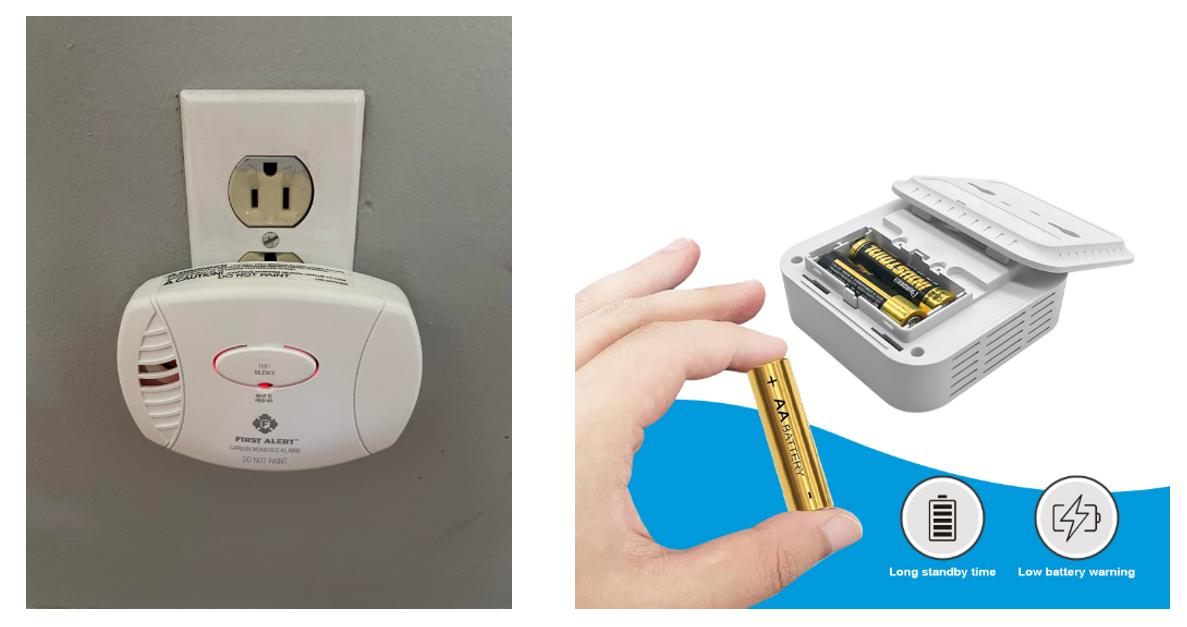Low Level Carbon Monoxide Alarms are gaining more and more attention in the European market. As concerns about air quality rise, low-level carbon monoxide alarms provide an innovative safety protection solution for homes and workplaces. These alarms can detect low concentrations of carbon monoxide in a timely manner, providing you and your family with earlier warnings to prevent potential health risks. This article will introduce the importance of low-level carbon monoxide alarms, their working principles, health risks, and their applications in the European market.

1. Importance of low-concentration carbon monoxide alarms in the European market
Carbon monoxide is a colorless, tasteless and odorless gas that is usually produced during incomplete combustion and is widely present in homes and commercial environments. Although high-concentration exposure to carbon monoxide (usually over 100 PPM) can quickly lead to life-threatening situations, the hazards of low-concentration carbon monoxide are often overlooked. Long-term accumulation of low-concentration carbon monoxide may cause headaches, dizziness, fatigue and other health problems. Since many traditional alarms cannot detect low-concentration carbon monoxide in time, the emergence of low-concentration carbon monoxide alarms fills this gap and provides users with additional protection.
If you are looking for a high-quality low-concentration carbon monoxide alarm, welcome to visit our website to learn more about our products. Our low-concentration carbon monoxide alarms meet European safety standards, provide accurate and timely warnings, and are ideal for your home and workplace safety. Click here to learn more.
2. How do low-concentration carbon monoxide alarms work?
Low-concentration carbon monoxide alarms use advanced sensing technology to sound an alarm when the carbon monoxide concentration reaches 30-50 PPM, earlier than the 100 PPM concentration threshold usually set by traditional alarms. These alarms monitor the carbon monoxide concentration in the air in real time through precise sensors, sounding the alarm before the danger occurs, reminding users to take preventive measures. This early detection mechanism can effectively reduce the risk of carbon monoxide poisoning, especially in closed or poorly ventilated environments.
3. Health risks of low-concentration carbon monoxide
Long-term exposure to low-concentration carbon monoxide may cause carbon monoxide poisoning in the human body, especially in closed spaces with poor air circulation. Common symptoms of low-concentration carbon monoxide exposure include headaches, nausea, breathing difficulties, fatigue, etc. Long-term exposure may even affect the nervous system and heart function. The existence of low-concentration carbon monoxide alarms allows people to intervene before carbon monoxide concentrations reach dangerous levels, protecting themselves and their families from health threats.
4. Types of low-concentration carbon monoxide alarms
There are different types of low-concentration carbon monoxide alarms on the European market, mainly divided into battery-powered and plug-in types.
Battery-powered alarms: suitable for homes and environments without fixed power supplies, easy to install, and widely popular among home users.
Plug-in alarms: suitable for environments that require long-term monitoring, such as offices, hotels or industrial facilities. Plug-in alarms are continuously powered to ensure 24-hour operation.

Both alarms can effectively monitor low concentrations of carbon monoxide and sound an alarm as needed. Depending on the usage environment, users can choose the appropriate product type.
Click here to view our low concentration carbon monoxide alarm product offering and select the model that suits your needs.
5. Regulations and standards for low-concentration carbon monoxide alarms
In Europe, many countries and regions have enacted regulations for carbon monoxide alarms. For example, countries such as the United Kingdom, Germany, and France have required new homes to be equipped with carbon monoxide alarms, and these alarms must comply with European safety standards such as CE certification and EN 50291. When purchasing, users should ensure that the alarm meets these standards to ensure its reliability and performance.
Conclusion: Low-concentration carbon monoxide alarms provide greater safety for European residents and workers
Low-concentration carbon monoxide alarms play a vital role in preventing health hazards and raising safety awareness. They provide additional protection for homes and workplaces, helping people take timely action when low-concentration carbon monoxide concentrations rise. As the European market continues to pay more attention to safety and health, low-concentration carbon monoxide alarms will become an indispensable part of daily life, providing European users with a safer living and working environment.
Post time: Feb-05-2025



